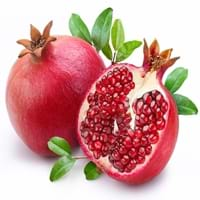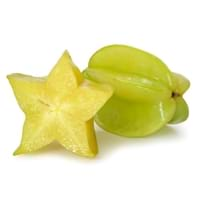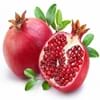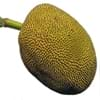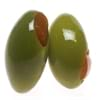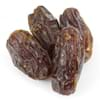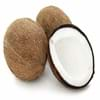Health Benefits
Cancer prevention, Heart care, Helps in cartilage regeneration, Improves stomach health, Increase in haemoglobin, Increases metabolic rate, Prevents constipation
Cancer prevention, Heat stroke treatment
General Benefits
Boosts immune system, Controls blood pressure, Controls blood sugar levels, Digestive aid, Maintains healthy cholesterol level
Anti oxidant properties, Anti-inflammatory properties, Digestive aid, Maintains healthy cholesterol level, Treatment of sore eyes
Skin Benefits
Anti-aging benefits, Skin rejuvenation, Treatment of acne
Anti-aging benefits, Heals sunburn, Skin rejuvenation
Hair Benefits
Prevents hair loss, Promotes longer and healthier hair, Treatment of dandruff
Promotes longer and healthier hair, Protects hair
Allergy Symptoms
Abdominal pains, Anaphylaxis, Itching
NA
Side Effects
Allergic reaction, Cold, Breathing difficulty, Irritation, Swelling
Nausea, Vomiting
Best Time to Eat
Best if taken as a breakfast (or empty stomach), As a snack in the late afternoon, Eat the fresh ones, avoid mixing with any other foods, don't eat after meal., Morning time (before lunch)
As a snack in the late afternoon, Eat the fresh ones, avoid mixing with any other foods, don't eat after meal., Strictly avoid empty stomach
Vitamin B5 (Pantothenic Acid)
Vitamin C (Ascorbic Acid)
Vitamin K (Phyllochinone)
Calories in Fresh Fruit with Peel
Not Available
Calories in Fresh Fruit without Peel
Not Available
Calories in Frozen Form
Not Available
Not Available
Calories in Canned Form
Not Available
Not Available
Calories in Jam
Not Available
Calories in Pie
Not Available
Type
Tree fruit
Tree fruit
Season
Autumn
Autumn, Spring, Summer
Varieties
Balegal, Crab, Cloud, Francis, Freshman and Granada
King, Bell, Sri Kembangan, Arkin and Fwang Tung
Color
Dark red, Light pink-red
Golden yellow, Green
Inside Color
Red
Yellowish Green
Shape
Round
Oval and Star(Cross section)
Taste
Juicy, Sweet
Crisp, Juicy, Sweet
Origin
India, Iran
Sri Lanka
Grows on
Trees
Not Available
Soil Type
Clay, Sand
Loam, Well-drained
Climatic Conditions
Cold, Dry, Hot
Moist, Warm to hot climate
Facts about
- Pomegranate means apple with many seeds.
- It was called as the “apple of Grenada” in early English.
- In Hinduism, this fruit symbolizes prosperity and fertility.
- Pomegranate trees can live upto 200 years.
- When carambola is cut horizontally, it forms a star.
- It is believed that carambola helps to cure hangover.
- Entire carambola is edible, including its skin.
- 2 varieties of carambola are cultivated: tart & sweet.
Other Countries
Africa, India, Middle east, Pakistan
Australia, Guyana, India, Israel, Malaysia, Philippines, United States of America
Top Importer
Europe
Europe
Top Exporter
India
Malaysia
Botanical Name
Punica granatum
Averrhoa carambola
Synonym
Punica malus
Not Available
Subkingdom
Tracheobionta
Tracheobionta
Division
Magnoliophyta
Magnoliophyta
Class
Magnoliopsida
Magnoliopsida
Order
Myrtales
Oxalidales
Family
Lythraceae
Oxalidaceae
Species
P. granatum
A. carambola
Generic Group
Pomegranate
Not Available
Difference Between Pomegranate and Carambola
We might think that Pomegranate and Carambola are similar with respect to nutritional value and health benefits. But the nutrient content of both fruits is different. Pomegranate and Carambola Facts such as their taste, shape, color, and size are also distinct. The difference between Pomegranate and Carambola is explained here.
The amount of calories in 100 gm of fresh Pomegranate and Carambola with peel is Not Available and 31.00 kcal and the amount of calories without peel is 83.00 kcal and Not Available respectively. Thus, Pomegranate and Carambola belong to and category.These fruits might or might not differ with respect to their scientific classification. The order of Pomegranate and Carambola is Myrtales and Oxalidales respectively. Pomegranate belongs to Lythraceae family and Carambola belongs to Oxalidaceae family. Pomegranate belongs to Punica genus of P. granatum species and Carambola belongs to Averrhoa genus of A. carambola species. Beings plants, both fruits belong to Plantae Kingdom.
